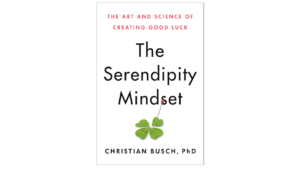EQ (emotional intelligence) can be increased by learning to identify where you feel it in your body.
Last week I talked about what it’s like to experience an emotional hijacking. I shared what’s going on in your heart and body as you experience strong reactions, physically and emotionally, to a fight or flight situation. If you missed that post, you can read it here.
Today, let’s look at common scenarios that might trigger an EQ hijacking at work.
As I said last week, the types of EQ scenarios you face at work are probably not life-or-death.
If you’re an emergency room doctor or nurse, yes, they are. If you’re a firefighter, yes, they are.
Yet, for most of us, it can feel like life and death, but it’s not.
Let me be clear. I’m not downplaying the stress, hope, fear, anxiety, and emotion you have at work each day.
Your feelings are valid.
I know that because I sometimes feel those feelings and because, as an executive coach, I help executives and their teams work through their feelings about their work.
Your experiences and feelings are real and valid. They just aren’t life or death.
Now that we’re clear on that let’s identify the WHY behind your interest in this topic.
When leaders ask me to help them develop EQ, I respond with questions like these:
Why do you want to learn about EQ?
How do you think it will help you?
And here are some common things I hear:
- Dealing with stress–coping with the stress of hiring, hitting our numbers, avoiding layoffs, acquiring a new company, you name it
- Imposter syndrome (we’ll talk about that in a future episode)
- Managing the relationship with the CEO or the board
- Understanding how to work with conflict at work
- Giving tough feedback–the feedback I should have given months ago
- Moving someone out of a role they’re not qualified for
- Feeling nervous when giving presentations
Those are some of the most common things I hear from clients, but that’s just a start.
What about you?
What are your reasons? Identify the things you want help with and what developing your EQ will help you change.
Here are more topic areas:
- Anger management
- Excessive workload
- Making risky decisions
- Personality challenges with coworkers
- Conflict: dealing with conflict (not a bad word!)
- Commuting, kids, life partner, paying the bills–life and work and the planet
Which ones resonate with you the most?
As you connect your learning to what you will get from it, your interest in EQ and your EQ itself will grow.
I want this knowledge to stick so you can use it repeatedly.
Otherwise, it becomes like the tamale workshop I took many years ago. Super fun. Loved it. Never made tamales again in my life.
I don’t regret it; it wasn’t a good investment of my time if I wanted to develop my basic cooking skills. I’ll leave it at that!
Okay, let’s put this into practice.
First step:
Make two lists.
List #1: List the scenarios in your work life that make you feel uncomfortable, sad, frustrated, ill at ease, and so forth.
List #2: List the people you don’t want to spend time with at work. They frustrate you, annoy you, and disappoint you.
These things and people make you feel a certain (not pleasant) way when you think of them.
Second step:
Pick one scenario or person. And replay in your mind how you feel when you are in that room, with that person, dealing with that topic, that customer, etc.
Write down any things that come to mind.
If you’re struggling to get some ideas going, check your calendar and look at when you next meet to discuss that topic or meet with that person.
Now, how do you feel?
Or, write down your thoughts right before or after the meeting.
What are you feeling in your body?
Here are common answers to help you:
- Some people feel hot.
- Some people feel cold.
- Some people feel their hearts beating fast.
- Some people feel dizzy.
- Some people get clammy hands.
Other physical signs include:
- Heart rate increasing
- Breathing changing: speeds up or slows down
- Starting to sweat
- Feeling cold
- Shaking
- Queasy stomach
These are some examples of the physical signs of your discomfort about a person or scenario. And maybe a hint, if unchecked, about a possible EQ hijacking.
The signs are different for different people. But you can learn exactly what yours are if you begin to listen to them as they happen to you.
Remember, fight or flight is how our minds and bodies have been trained to operate. It can be hard–but far from impossible–to change our reactions.
We all get hijacked at times. The key is not to be hijacked often–and everywhere and with everyone.
You may hear this and think, “Wow, I’ve been feeling some of these things and never realized what was going on.”
Well, you are on your way to raising your EQ by reading the signals and listening to them.
Next week, I’ll discuss what to do with your lists of topics, people, and feelings. And we’ll discuss self-management, another crucial element of EQ.






